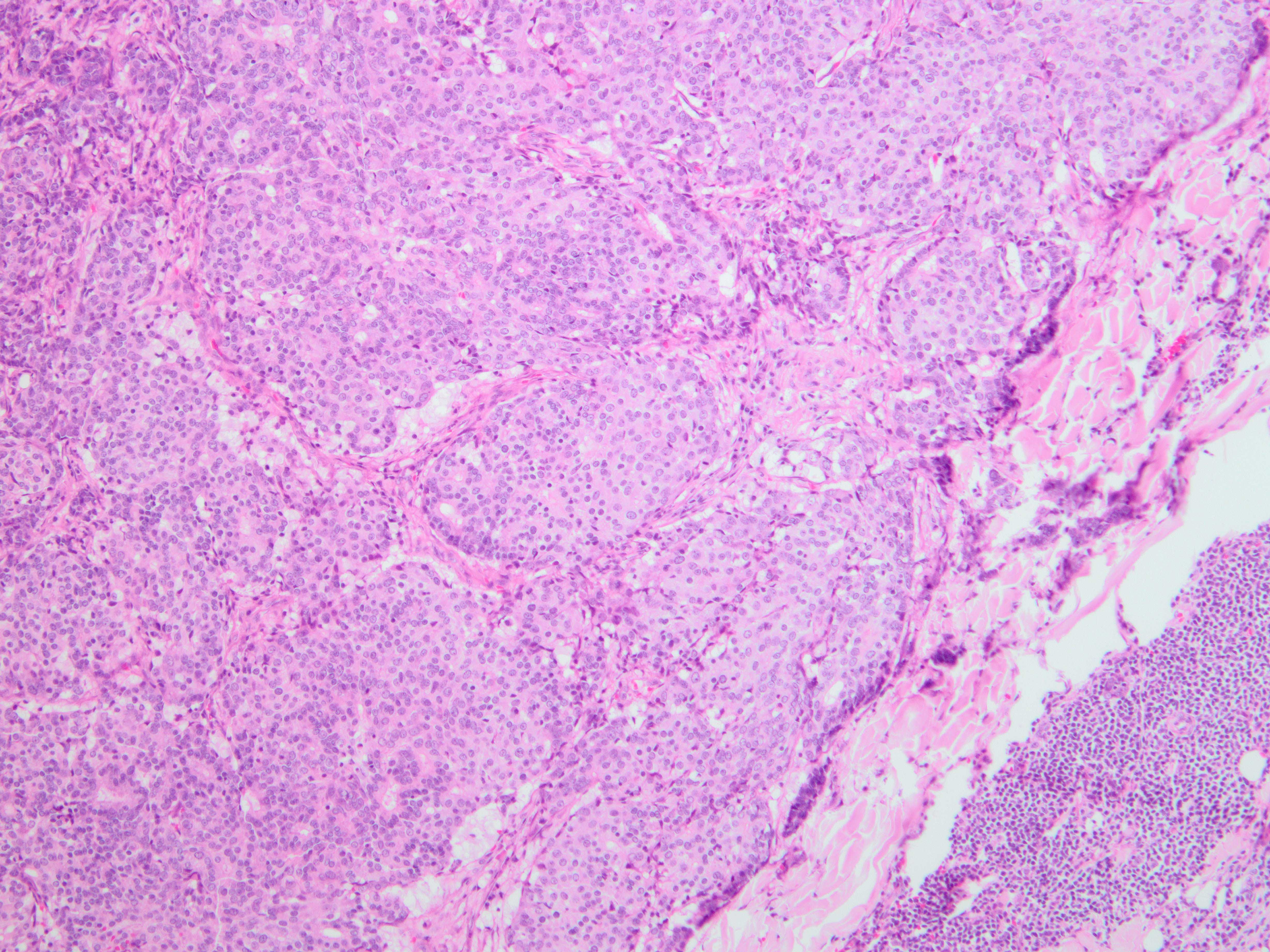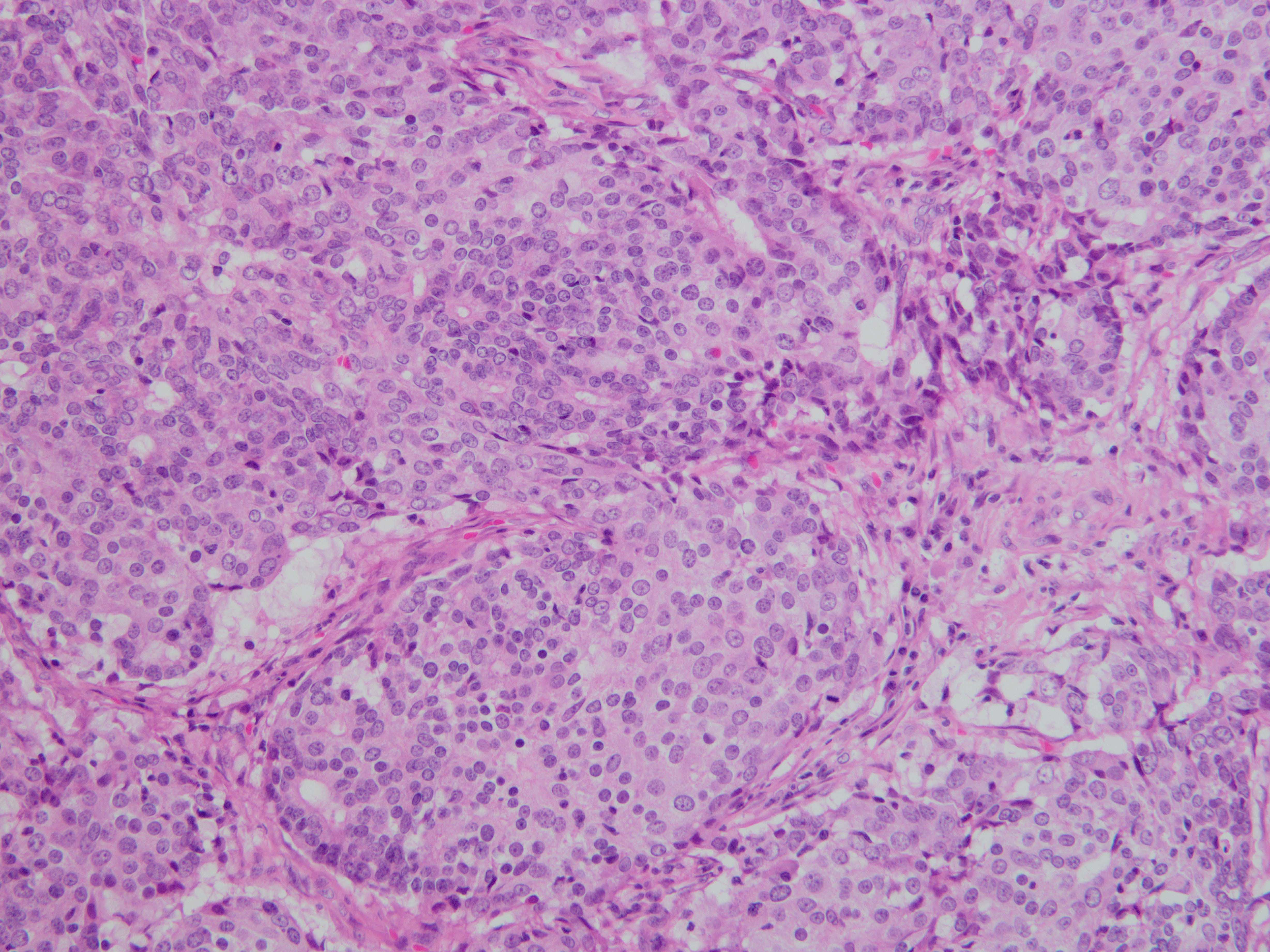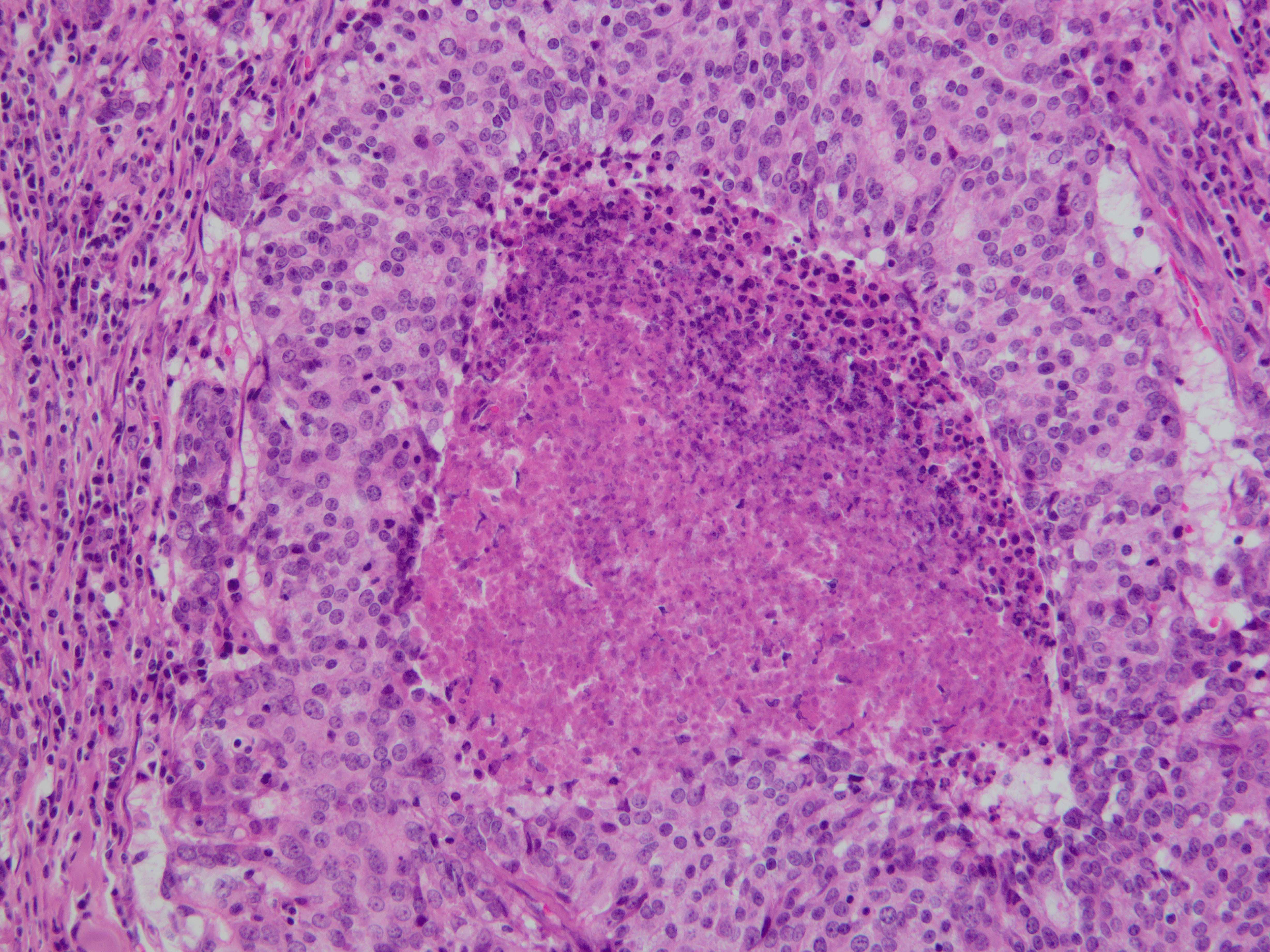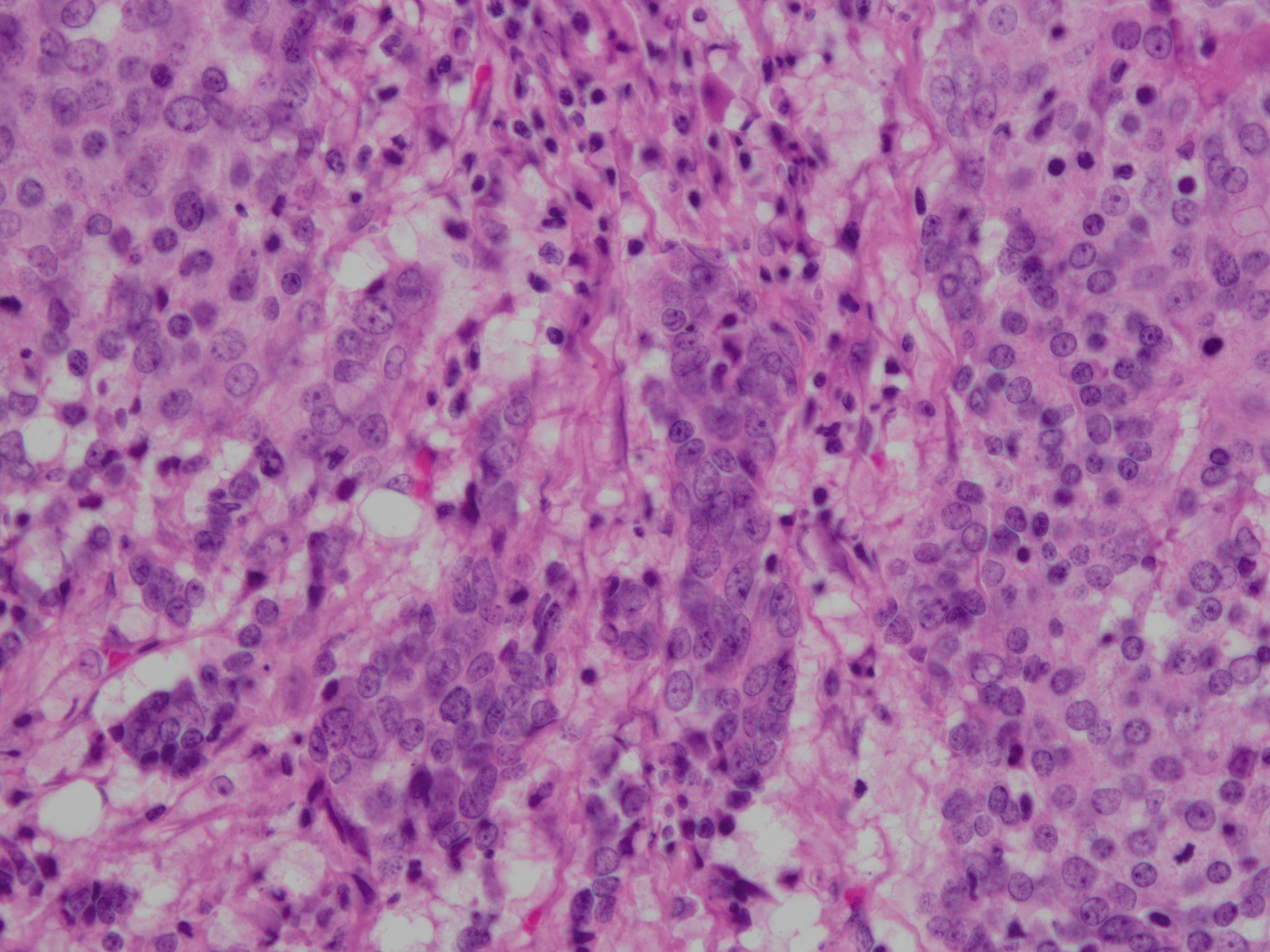Case History
An 70-year old male reports having a parotid mass for years. In the past year, it has grown rapidly and extended to his skin. Representative sections are shown. Tumor cells are positive for DOG1 and negative for androgen receptor, mammaglobin, and p63.
What is the diagnosis?
- Adenocarcinoma, NOS
- Acinic cell carcinoma, with high-grade transformation/dedifferentiation
- Salivary duct carcinoma
- Adenoid cystic carcinoma, with high-grade transformation/dedifferentiation




Answer: B. Acinic cell carcinoma, with high-grade transformation/dedifferentiation
Brief explanation of the answer: Acinic cell carcinoma is typically a slow-growing malignancy without aggressive behavior. However, foci of necrosis are consistent with dedifferentiation and thus a worse prognosis. Other aggressive features of this tumor included perineural invasion (not shown), mandibular bone invasion, and extension to the facial skin. High grade transformation/dedifferentiation has also been reported in other salivary gland neoplasms, including adenoid cystic carcinoma, epithelial-myoepithelial carcinoma, and myoepithelial carcinoma.
Although salivary duct carcinoma and dedifferentiated adenoid cystic carcinoma also have areas of comedonecrosis, these entities are not consistent with the above immunoprofile. Salivary gland adenocarcinoma, NOS is a diagnosis of exclusion made after ruling out other neoplasms.
Case contributed by: Diana Lin, M.D.., Assistant Professor, Anatomic Pathology